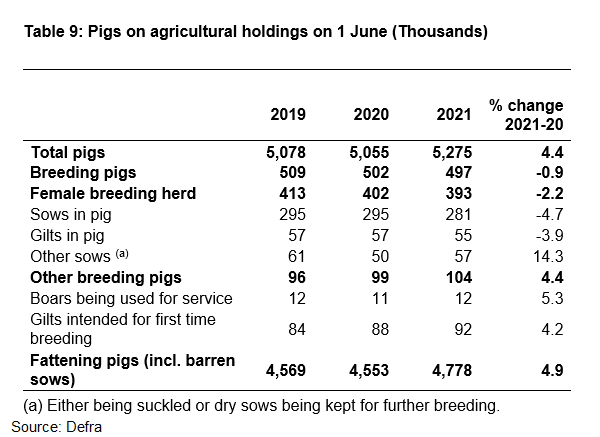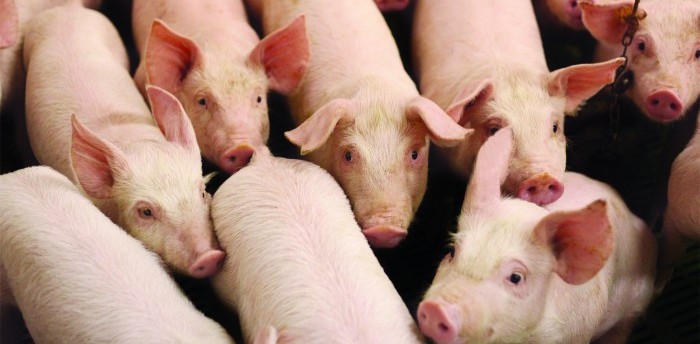These figures take account of trends recorded in the 2021 English and Scottish surveys, with figures for other UK regions rolled over from 2020. Final UK census results, taking account of all regional 2021 data, will be available at the end of the year.
The upward movement was driven by a 5% increase in fattening pigs. “We always urge caution over interpreting the census results, as trends are not always borne out in subsequent slaughter data. In this case however, they are certainly supported by the current difficulties being experienced on farms,” AHDB analyst Bethan Wilkins said.
“As discussed in our previous outlook, we believe some increase in the sow herd took place last year, although this was not captured by the Defra surveys. This would account for some of the additional pigs available now. Higher sow productivity may also have played a role, though the available Agrosoft data does not indicate much change over the past few years.”
The female breeding herd was recorded as about 2% lower compared with a year earlier. However, this figure excludes maiden gilts, for which there was a notable rise. The overall number of pigs for breeding was therefore barely changed (-0.9%).
“An unexpectedly low culling year last year, influenced by disruptions to cull sow trade with the continent, does mean we would expect more replacements to come through this year. This gives the potential for subsequent further productivity growth, as the breeding herd becomes younger,” Ms Wilkins said.

However, she pointed out that the issues experienced across the industry this year, including poor profitability, this year, a drop in the number of breeding sows is expected.
“There has been over four months since the date these figures refer to, over which time some producers have experienced increasingly difficult conditions on farm. So, it does seem likely that the breeding herd has declined further since then,” Ms Wilkins added.
“A more significant reduction in sow numbers in the latter part of this year could start to lower production levels in the second half of 2022.”




